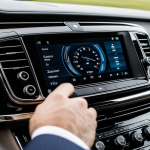Vehicle Maintenance Checks for Rural Driving
For those navigating the challenges of rural roads, proactive vehicle maintenance is crucial. Regular checks can help prevent inconvenient or dangerous breakdowns. Key maintenance areas to focus on include brakes, tires, lights, and fluids.
Proper brake maintenance ensures safety, as rural roads can present unpredictable hazards that require quick stops. Keep brake pads and fluids regularly inspected and replaced as needed. Tires are another critical focus; they endure harsher wear on rugged terrain, so check tire pressure and tread depth frequently to ensure optimal grip and control.
Also to discover : Navigating the risks of drug-impaired driving: a comprehensive guide to uk regulations and penalties
Lights, both front and rear, are vital for visibility in low-light conditions or during inclement weather. Make sure all bulbs are operational and lenses are clean. Fluids, including coolant, oil, and transmission fluid, should be evaluated regularly to keep your vehicle running smoothly.
Rural vehicle checks must also consider seasonal adjustments. For instance, winter driving demands antifreeze and snow tires, whereas summer heat may require increased attention to coolant levels. Before each journey, a short inspection could save both time and money, keeping you safe on those less-travelled paths.
Also to discover : Mastering Winter Care: Essential Tips to Shield Your Classic Car from the UK’s Frosty Embrace
Essential Equipment for Rural Commuting
Rural driving demands thoughtful preparation and having the right equipment can significantly impact your safety and comfort. The unpredictability of unpaved roads makes essential gear all the more crucial.
Must-have tools and supplies
Prepare your vehicle with tools that can tackle unexpected roadside occurrences. A reliable spare tire, complete with a jack and lug wrench, is indispensable. Carry jumper cables to revive a dead battery and a multi-tool for basic repairs. Additionally, pack a fuel can for emergencies in areas with limited gas stations.
Technology aids for rural driving
Technology can be a lifesaver when navigating rural terrain. Equip your car with a GPS device for reliable navigation in signal-deprived zones. Use roadside assistance apps that link you to help when needed. These tech tools make it easier to manage challenging driving conditions.
Recommended safety gear
Safety gear is key for rural commutes. Always have a comprehensive first aid kit on board. It’s also wise to include reflective vests to ensure you’re visible in low-light conditions or emergencies. This equipment helps maintain security and readiness while driving through rural locales.
Navigating Diverse Weather Conditions
When traversing rural areas, weather preparedness becomes a cornerstone of safe driving practices. Roads can change quickly under varying weather conditions, requiring strategy and equipment to ensure safety.
Driving in Rain and Wet Conditions
Wet conditions can severely impact vehicle control. To stay safe, ensure tire treads are deep enough to provide ample grip on slippery surfaces. Activate headlights to increase your vehicle’s visibility to others and reduce speed to retain control. Aquaplaning is a risk in heavy rain, so avoid sudden movements and brake gently to prevent skidding.
Winter Driving Tips
Winter requires additional precautions; equip your car with snow tires and use antifreeze to prevent coolant from freezing. Clearing snow off your vehicle aids visibility and prevents hazards to other drivers. Keep a shovel and ice scraper in the trunk as handy tools for immediate snow removal. Additionally, maintaining a safe distance from other vehicles can prevent collisions on icy roads.
Checking Weather Forecasts
Regularly check weather forecasts before embarking on a journey. Knowing upcoming conditions allows you to make informed decisions, such as delaying travel during severe storms. Proper preparation for weather changes not only enhances safety but also leads to a smoother and less stressful drive.
Emergency Preparedness for Rural Drivers
Navigating rural areas requires diligence in emergency preparedness to ensure safety and recovery from roadside emergencies. Having a well-stocked emergency kit is crucial for unanticipated situations. It should include items such as a flashlight, non-perishable snacks, bottled water, and blankets. These essentials provide comfort and survival options during long waits for assistance.
Creating an Emergency Kit for Your Vehicle
Begin by outfitting your car with items facilitating basic survival and repair. Essential items include road flares or reflective triangles for visibility, and a basic tool kit for minor fixes. A portable phone charger is indispensable for maintaining communication.
Communication and Signaling During Breakdowns
When dealing with roadside emergencies, signaling for help is vital. Using hazard lights and deploying flares enhance your visibility to others. If possible, move your vehicle off the road to reduce risk. Employ both passive signals, such as a brightly coloured cloth on your antenna, and active methods, like waving a flashlight at night.
Contacting Roadside Assistance
Efficiently contacting roadside assistance can expedite your rescue. Provide clear, concise details about your location and situation. Keep contact numbers for local services handy. Consistent communication ensures that help arrives as quickly as possible, enhancing safety and reducing anxiety during emergencies.





